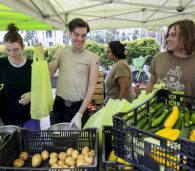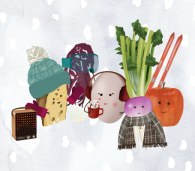More (Goat) Cheese, Please!
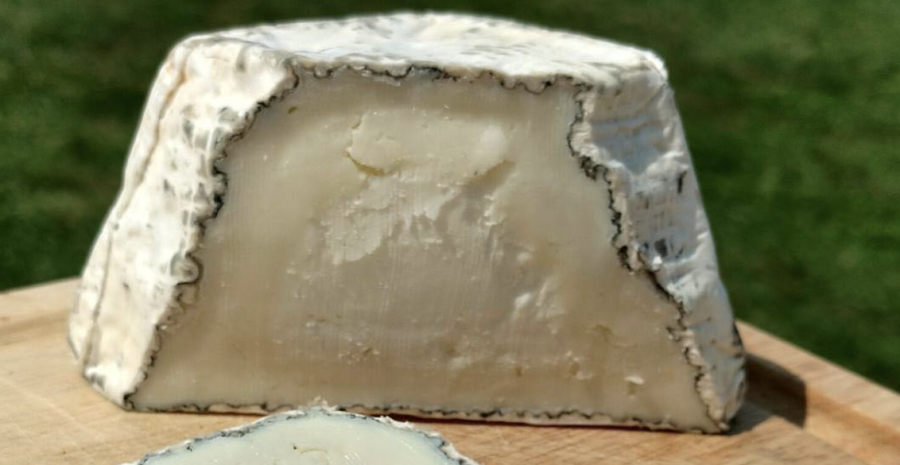
Have you ever had a party where you served wine and cheese and there were a few people that just hovered over your beautiful cheese board, guarding it from other mouths and hoarding it all for themselves? Well, those people would be us.
But you can’t blame us! Cheese is one of our favorite things to eat. Cheese is also mildly addicting. It’s filled with special compounds that release dopamine in our brains, which keeps us coming back for more.
We caught up with the local cheese-lovers and cheese-mongers from Shepherd’s Whey and Cheese Goatees to learn more about what cheese means to them.
Shepherd’s Whey Goat Cheese
In a certified creamery on a farm in Martinsburg, West Virginia, you’ll find Suzanne and her 100% goat milk cheese. All of her cheese is hand-made and small-batch, meaning each cheese you eat is cared for and tended to by Suzanne herself, who owns Shepherd’s Whey. Suzanne tells us that “by the time that Napoleon’s Peak reaches your table, it has been hand-ladled to drain, hand-pressed into the pyramid, hand-ashed and -salted, hand-turned daily over the two to three week aging time, wrapped, weighed, labeled, and brought to you at market. So you get all of our love and care in each piece!” Each cheese and dairy product made by Shepherd’s Whey is designed to meet the needs of their shoppers.
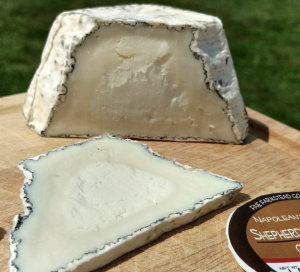
Suzanne opened her creamery in 2012, milking just nine goats and selling at one small local farmers market. She is solo for most of the cheesemaking process, but since her opening, she has added the help of one to two staff members to assist in the aging and finishing steps. Additionally, she has an intern and three other staff members working in the dairy caring for the animals and collecting the milk. She notes that “cheese can take from one day to one year or more to make, so there are lots of little steps involved! We have our own goats to produce the milk, so a lot of the work of cheesemaking starts in the pasture and the milking parlor.” Most days, Suzanne is in the making room by 5am, pasteurizing and setting things up for the day’s productions.
Let’s make cheese!
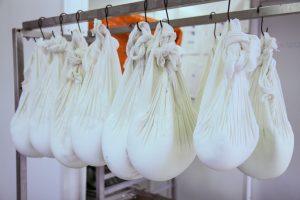
To make cheese, you need milk, culture, something to coagulate the milk (rennet), and salt. Suzanne explains that the “first step after pasteurizing is adding culture, which is the live bacteria that feed on the sugars in the milk and produce lactic acid, which turns the milk into cheese. Each cheese type has its own specific cheese cultures. After the cheeses’ specific time of culturing, we add a microbial rennet (vegetarian compliant), and when the milk sets for a specific amount of time, we cut the curd and stir and adjust the temperature to help the curd expel the moisture (also known as whey) and firm up into the curds that can then be pressed into a wheel of cheese. At some point, we also add salt — sometimes to the curd in the vat, sometimes by putting the wheel into a brine, sometimes by hand salting the outside of the cheese, sometimes not until we are ready to portion it out for that week’s market.” Note that if you’d like to learn more about the specific brining of your favorite Shepherd’s Whey cheeses, be sure to ask Suzanne at market!
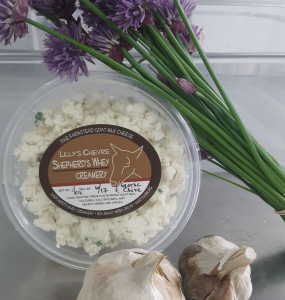
When storing the cheese you purchase from market, Suzanne says it’s best to keep it in a refrigerator. When serving, be sure to take it out of the fridge and let settle at room temperature. When you bring home the cheese it will continue to age, so depending on your preferences, you may want to eat it within the first few days of bringing it home, or wait a week until it is more ripe, strong, and soft. Suzanne notes that: “most of our cheeses freeze really well, so if you know you won’t be able to consume the whole cheese, you can divide it and freeze the parts you aren’t going to eat.” Once you open the cheese, keep it loosely wrapped in the paper it came in, and then put it into a paper bag or a plastic bag left open a bit so that the cheese can continue to breathe. The chevres can be left in their container.
Cheese Goatees Goat Cheese
Nestled in Waynesboro, Pennsylvania, you’ll find Jude, his wife, and five children, surrounded by goats and cheese! When asked what makes Cheese Goatees so special, Jude says “all the milk that goes into our cheese travels a very short distance and time from the goats to the cheese-making plant. It is all done right here on our farm where we live, where the goats live, and where the cheese lives.” Jude and his family do all of the goat chores and cheese making. They also get some help from different family members and friends to sell at markets.
“We milk our 42 goats into a milk tank. Then the milk gets pumped directly into the cheese room to be made into cheese. From our barn, where the goats live, to the cooler where we put the finished cheese is less than 150 feet apart. This is not something that many cheesemakers can claim,” explains Jude.
Jude and his family did not always make cheese. He tells us that they “mainly learned how to make cheese from reading books, and trial and error. We are still learning. We also picked up a lot of information through different networking events and other cheesemakers.” He continues, “cheese can be fun to make, but it takes time commitment because you cannot make cheese fast.”

